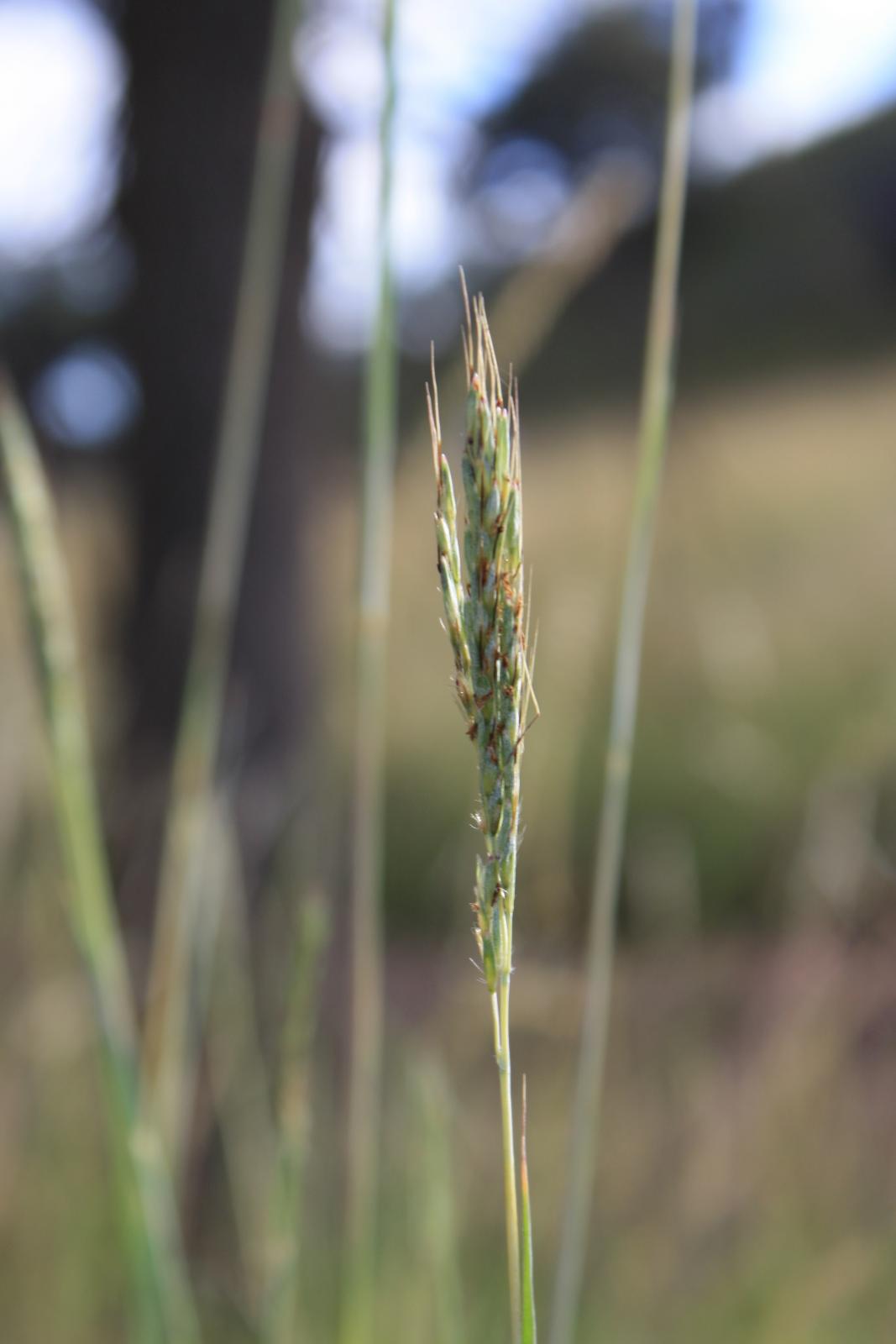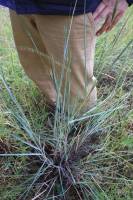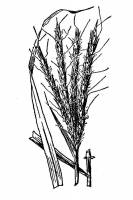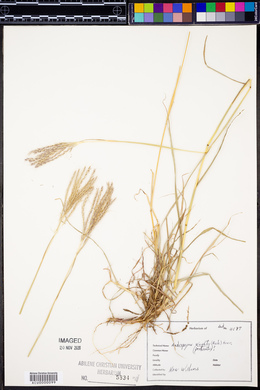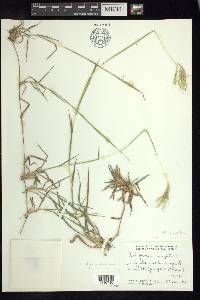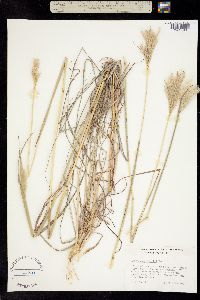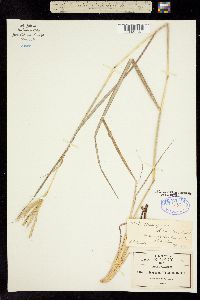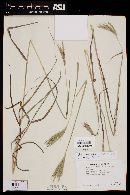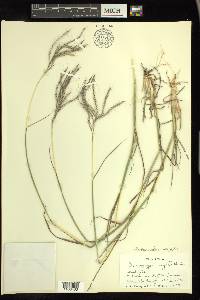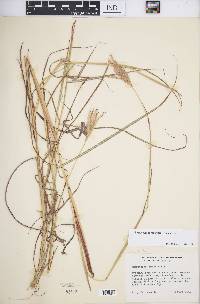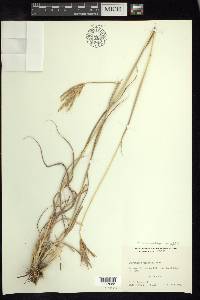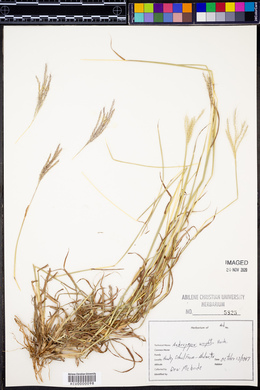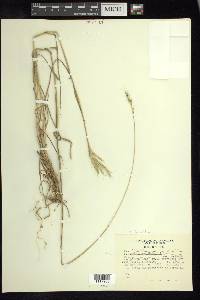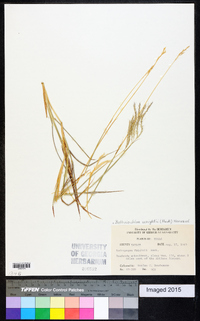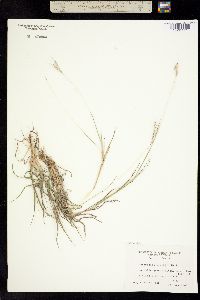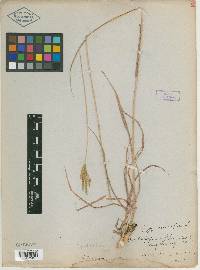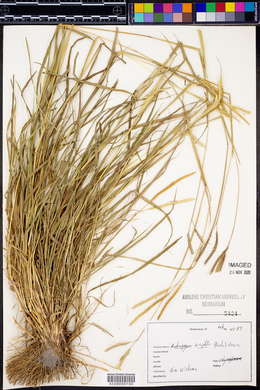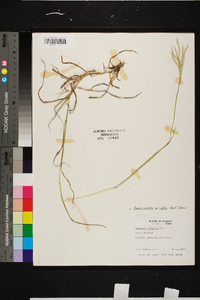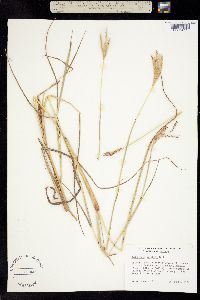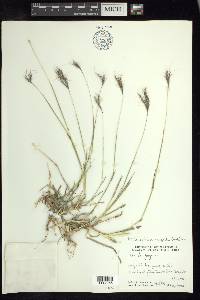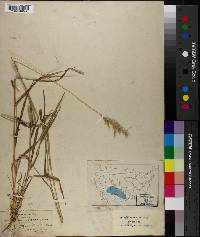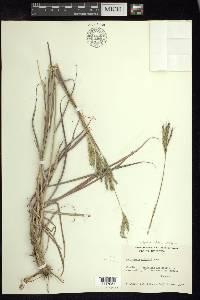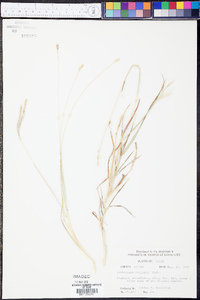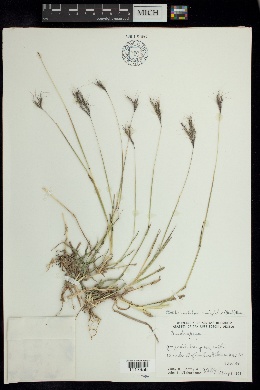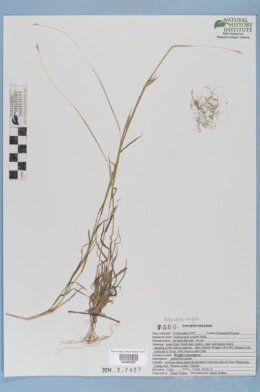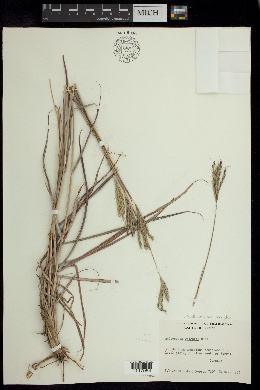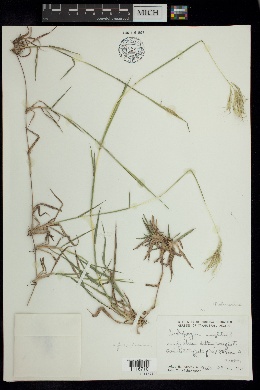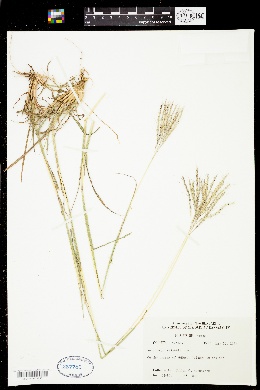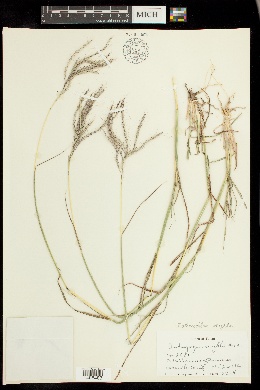
|
|
|
|
Family: Poaceae
Wright's Beard Grass, more...Wright's beardgrass, Wright's Bluestem
[Amphilophis wrightii (Hack.) Nash, moreAndropogon wrightii Hack., Sorghum wrightii (Hack.) Kuntze] |
Culms to 70 cm, erect, sparingly branched; nodes glabrous or hirsute, hairs about 1 mm. Leaves cauline, glaucous; ligules 1-2 mm; blades 15-25 cm long, 3-7 mm wide, glabrous. Panicles 5-6 cm, oblong to fan-shaped; rachises 1-3 cm, with 4-5 branches; branches 4-6 cm, lacking axillary pulvini, with 1 rame; rame internodes with stiff, 1-3 mm marginal hairs. Sessile spikelets 5.5-7 mm, lanceolate-elliptic; lower glumes glabrous, usually without a dorsal pit; awns 10-15 mm, twisted, once-geniculate; anthers about 3 mm. Pedicellate spikelets staminate, subequal to the sessile spikelets. 2n = 120. Bothriochloa wrightii grows in rocky grasslands and shrubby slopes of the pine-oak woodlands of southern Arizona, New Mexico, Texas, and northern Mexico, at 1200-1800 m. It was last collected in the United States in 1930. It differs from B. barbinodis in its glaucous foliage, short, fan-shaped panicles, and large, pedicellate spikelets. FNA 2007 Common Name: Wright's beardgrass Duration: Perennial Nativity: Native Lifeform: Graminoid General: Perennial bunchgrass up to 70 cm tall; erect, sparingly branched; nodes glabrous or hirsute, the hairs about 1 mm. Vegetative: Leaves cauline, glaucous; ligules 1-2 mm; blades 15-25 cm long, 3-7 mm wide, glabrous. Inflorescence: Panicles 5-6 cm, oblong to fan-shaped; rachises 1-3 cm, with 4-5 branches; branches 4-6 cm, with 1 rame each; rame internodes with stiff, 1-3 mm marginal hairs. Sessile spikelets 5-7 mm, lanceolate-elliptic; lower glumes glabrous; awns 10-15 mm, twisted, once-geniculate. Pedicellate spikelets staminate, subequal to the sessile spikelets. Ecology: Found in rocky grasslands and shrubby slopes of pine-oak woodlands. Distribution: s. AZ, NM, TX, and n. MEX, from 4,000- 6,000 ft (1219-1829 m) Notes: Bothriochloa is a genus of large perennial grasses with distinctive inflorescences of subdigitate (fingerlike) to racemosely arranged branches. Along the inflorescence branches, spikelets are arranged in pairs, one spikelet sessile, fertile, and usually with a geniculate awn from the lemma, and the other spikelet on a pedicel, somewhat reduced, and sterile or staminate. At maturity, the inflorescence breaks into many pieces, with the disarticulation points being along the rame beneath each sessile spikelet. Bothriochloa wrightii is distinguished by its glaucous foliage, short, fan-shaped panicles that are much less hairy than other Bothriochloas, and the large pedicillate spikelets, which (as is unusual in this group) are equal in length to the sessile spikelets. Ethnobotany: unknown Etymology: Bothriochloa is from the Greek bothros, a pit or hole, and chloe or chloa, grass, alluding to the small pit on the first glume of some species in the genus; wrightii pays homage to Charles Wright, a 19th century American botanist who collected extensively in Texas and throughout the world. Synonyms: Andropogon wrightii Editor: AHazelton 2015 |

